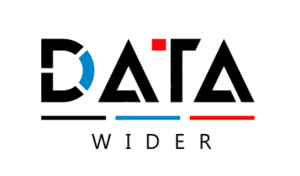A quality assurance system can be defined as the structure, responsibilities, procedures, processes and resources of an organization to implement quality management [ANS87]. ISO 9000 describes elements of quality assurance in a general form that can be applied to various businesses regardless of the products and services offered.
In order to be listed in a model of the quality assurance system that exists at ISO 9000, the company’s quality and operation system is examined by a third part auditor to check compliance with the standard and effective operation. If the registration is successful, the company is given a certificate from the registration body represented by the auditor. Mid-year supervisory audits continue to be carried out to ensure compliance with established standards.
Software quality assurance (SQA) are: Process protective activities that are applied to all software processes.
SQA (Software Quality Assurance) includes:
- Quality management approach
- Effective software engineering technology (methods and tools)
- Formal technical studies are applied to the entire software process. Multilateral testing strategy; (multi-level series)
- Control software documentation and changes made to it
- Procedures to ensure compliance with software development standards (if applicable)
- Measurement and reporting mechanism
Software Quality Concept
- Quality: The American Heritage Dictionary defines the word quality as “a characteristic or attribute of something”, as an attribute of something, quality refers to the measurable characteristics of something that we can compare with known standards, such as length, color, electrical properties, softness etc.
- Software is mostly; intellectual entity, more challenging to catalog than physical objects.
- Design quality refers to the characteristics determined by the designer for certain items.
- Conformation Quality is the level at which design specifications are followed during manufacture. The higher the level of conformation quality
- Quality Assurance (QA): QA is a series of checks, reviews and tests that are used throughout the entire development cycle to ensure that each product meets specified requirements.
Quality control:
Includes a loop (loop) of feedback processes that create work products.
Quality assurance:
Quality assurance consists of auditing and management reporting functions. The purpose of quality assurance is to provide data needed by management to inform quality problems, products, so as to provide certainty and confidence that product quality can meet targets.
Testing in the Development Cycle of Software Testing Techniques
Design
- Structured chart
- Structured English
- Decision Table
- Decision Tree
- Equation Data dictionary
- Orn Warnier diagram
- Jackson diagram
Code (Code)
Write statements in a programming language
Test
Testing of all
Application Software Resources
- Commercial software from a vendor
- Customizable software
- The advantages and disadvantages of using packages
Commercial Software:
The advantage
- Fast Implementation
- Cost savings
- Cost and time estimates
- Reliability
Disadvantages
- Poor system design compliance
- Dependency on the vendor
- Indirect costs from damage to SDLC
Which is prepared by the QA vendor
- RFP (Request For Proposal)
- Prototyping
Organizing Software Development Projects
- Organizational approach
- Program development team
- Chief programmer team
- Egoless programming team
The device used is a program review and evaluation technique (PERT)
PERT: to determine the sequence or sequence of implementation of software development tasks and to estimate the length of time needed from the beginning to the completion of the implementation
task.
Steps to form a PERT network
- Identify all tasks
- Estimating time
- Assign a series of tasks
- Determine the critical path
Quality Fee: The cost of quality concerns all Maya that is held to pursue quality or to display quality related to activities.
- Quality costs can be divided into costs associated with prevention, evaluation and failure.
- Prevention costs include Quality planning
- Formal technical study
- Testing Equipment Training
Valuation fees include:
- In-process and inter-process inspection
- Equipment maintenance and calibration
- QA Testing
Failure costs include:
- Workmanship change
- Repair
- Analysis of failure modes
External failure costs include:
- Resolution of complaints
- Help line support
- Product replacement and return Guarantee work
Definition of SQA
Software quality is identified as: Conformance to functional and performance requirements that are explicitly stated, explicitly documented developmental standards and expected implicit characteristics for all professionally developed software. Background issues:
- Quality assurance is a fundamental activity for many businesses that produce products that will be used by others.
- Software quality assurance is the “systematic and planned pattern of action” required for software quality assurance.
- Implications are the many choices that software technicians, project managers, customers, sellers and individuals who work in a group (SQA)
SQA Activity
Quality assurance activities carried out by the software engineering team and the SQA group are regulated by a plan, including:
- Evaluation conducted
- Audits and studies conducted
- Standards that can be applied to projects
- Procedure for reporting and tracking errors
- Documents produced by the SQA group
- Number of feedback given to the software project team.
SQA group Process to conform to organizational policies, internal software standards, external standard standards (for example: ISO 9001), and other parts of the software plan.





